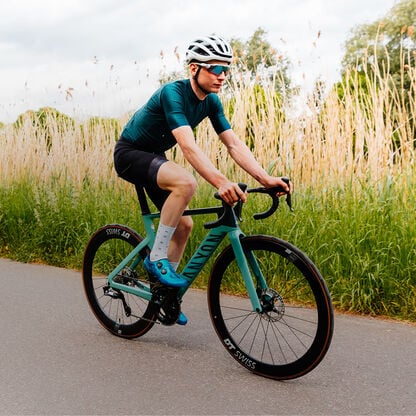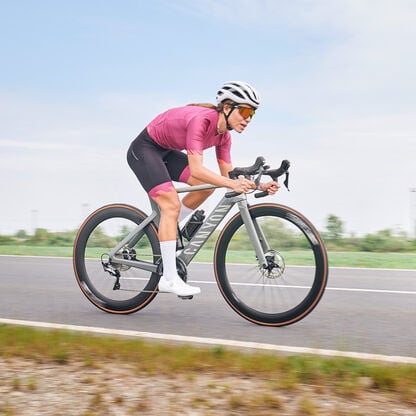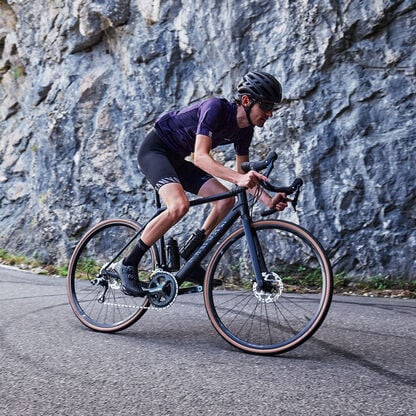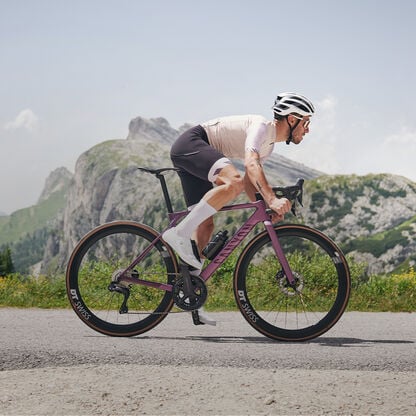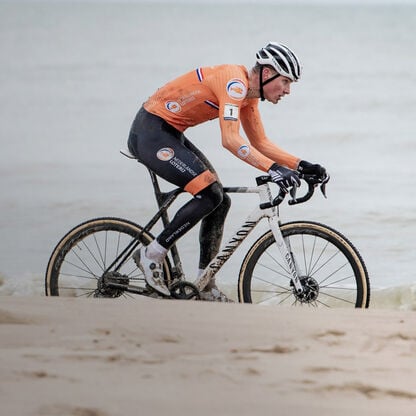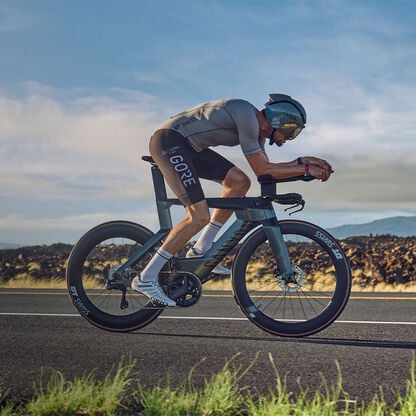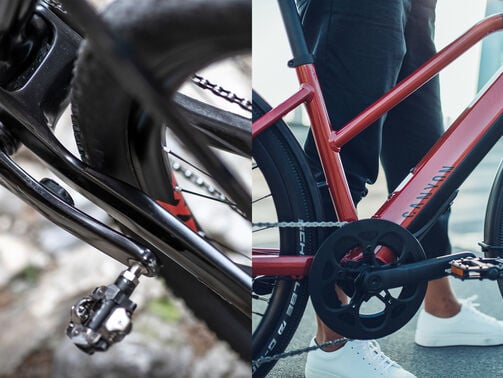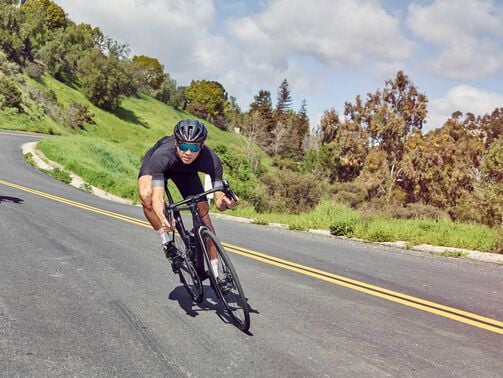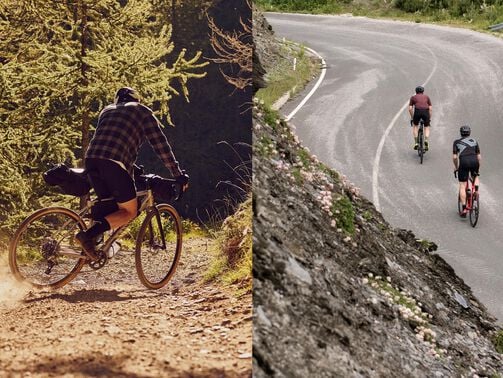Road bike tire pressure - the Canyon guide
Tire pressure is a major factor in determining how fast, comfortable, safe, and stable you feel on your road bike. Find the right pressure for you with this complete guide.
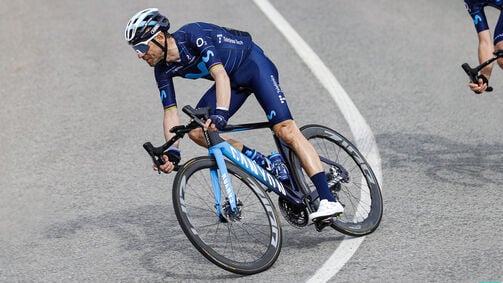
When you’re riding, the tires are the only contact point between your bike and the ground. By pumping your road bike tires to the right pressure, you can get the ride feel, grip and speed you want.
What factors affect the correct road bike tire pressure?
There’s no one-size-fits-all correct tire pressure for all riders and situations. In general, the narrower a bicycle tire is, the higher the pressure should be. However, pumping the pressure too high can have detrimental effects to performance and comfort, by reducing grip and increasing vibrations. Besides that, the optimal air pressure depends on various factors:
Road surface
On a brand-new super-smooth road surface, a road bike with higher tire pressure will generally roll faster. However on rough roads, that changes. If the tire pressure is too high, the tire can’t absorb the jolts and vibrations from the uneven surface, affecting the bike’s ride quality, your comfort, and how fast you can go. When planning your route, always take into account the surfaces you will be riding on – this will let you adjust the tire pressure accordingly.
Weight
The rider contributes the majority of the overall system weight. That means that you should base your tire pressure on your weight, while also taking the weight of your setup into account. This is especially important in bikepacking, for example, where your extra luggage can increase the total system weight by several pounds. Without tweaking air pressure, the handling, comfort, and puncture resistance of your bike will suffer. Heavy riders should pump more air into their tires than lighter ones. It’s a good idea to inflate the front wheel less than the rear wheel, because the rear wheel carries more weight.
Tire width
Rather than just going ahead and adjusting your tire pressure based on guesswork, it helps to take a look at the sidewall of the tire beforehand. The sidewall displays the standardised ETRTO tire size as well as information on the recommended maximum and minimum tire pressure. Too high a pressure makes riding uncomfortable, whereas too little pressure causes increased wear. Compared to a touring bike with tires between 37-52 mm, road bike tires are narrower and generate less drag. For decades, pro cyclists used tires that were around 20 mm wide. However in recent years, the advantages of extremely narrow tires have been disproven. Nowadays, the trend is going towards wider tires, with the most prevalent widths being 25 or 28 mm. When you accelerate on a road bike, you can really feel the lightness of the tires – their low rotating mass – compared to heavier MTB or touring bike tires.
Tire construction
The material and construction of a road bike tire all have an effect on its optimal pressure. Racing tires have delicate, finely constructed carcasses with a large number of thin cotton or nylon threads. These casings deform more easily at high pressures and have a smoother, faster ride feel. Other types of tires, like winter tires, have stiff, tough carcasses with a smaller number of thick nylon threads. In general, these types of tire need less pressure.
Temperature and weather
In wet conditions you should lower your road bike’s tire pressure by about 7 psi to maintain grip. At high temperatures, your tire pressure increases all by itself – especially if you’re riding carbon rims. To avoid the pressure building up to dangerously high levels, you should drop your pressures on hot days with long descents.
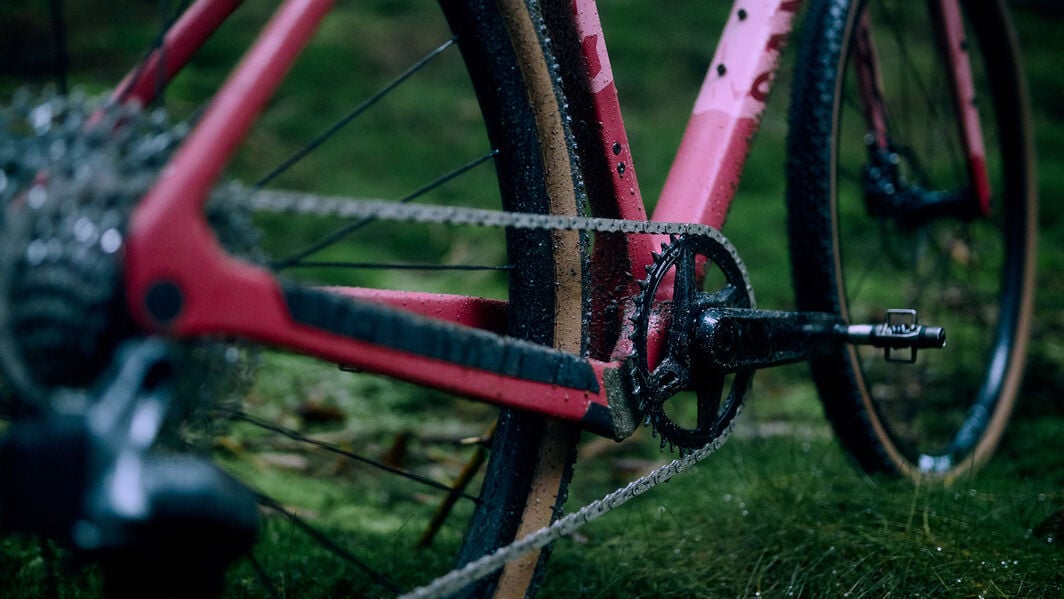
How do I find the right road bike tire pressure?
You can use a few different rough calculations to figure out your ideal tire pressure setup. Once you have a baseline figure, you can play around with it to adapt it to the conditions on your local routes and cycling trips. This is how to find the right pressure on your road bike:
Rule of thumb: 10% of body weight
Your ideal tire pressure always depends on your body weight. A helpful baseline figure is – calculate 10% of your body weight in kilograms, and pump your tires to that number in bar. In other words, if you weigh 75 kg, you should inflate the tire to 7.5 bar (110 psi).
Rider weight and tire width
You can get an even more accurate picture if you also take the width of the tire into account as well as your weight. You should bear in mind that values can vary depending on the manufacturer and tire model. If you weigh 70 kg, you should choose 7.6 bar (110 psi) for a 23 mm wide tire, 6.7 bar (100 psi) for a 25 mm tire, and 5.7 bar (85 psi) for 28 mm. For every 10 kg of body weight, adjust the tire pressure up or down by 1%.
Figures in bar and PSI
Tire pressure on road bikes is usually given in bar or PSI. PSI is the unit of measurement used in America, which is why you will find PSI values on products from manufacturers based there. 1 bar is equivalent to 14.5 PSI.
Puncture risk
For more comfort, you can reduce the pressure in your road tires. If the pressure is too low, you will stress the carcass and wear down the tread more. Doing this also increases the risk of getting a puncture when you ride over small obstacles. Kerbs, potholes, or small stones may damage the inner tube and possibly the rim too.
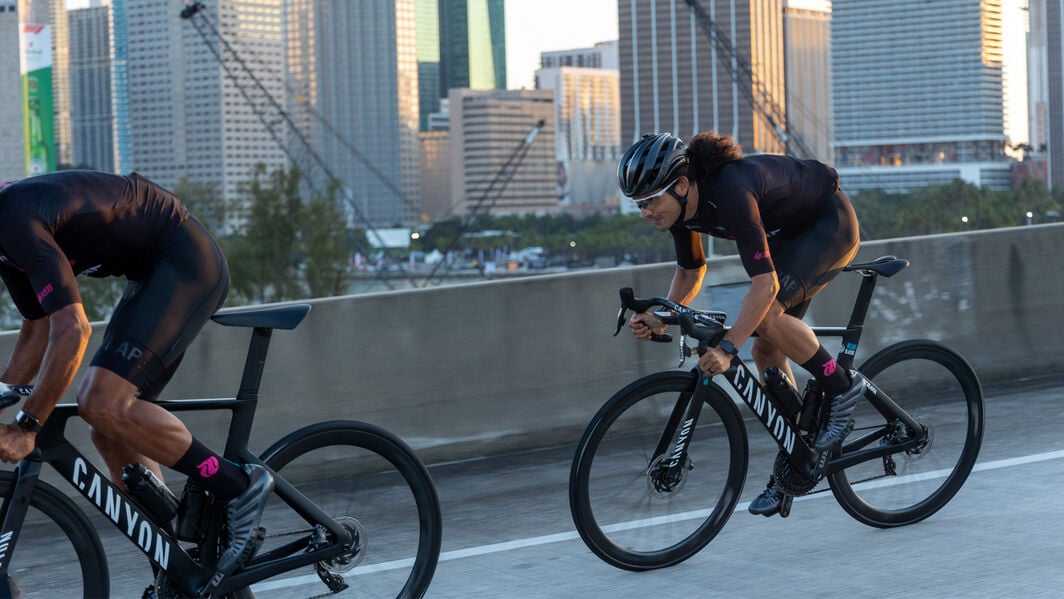
Why is the right tire pressure so important?
A tire’s rolling resistance is an even more important factor than its weight, rolling resistance, or aerodynamics. And a tire’s rolling resistance varies depending on its air pressure. With wider bicycle tires, the tire’s contact area is short and wide. Narrow tires have a long, narrow contact patch. The width of the tire does not affect the rolling resistance. You can use wider road bike tires without increasing the rolling resistance.
What exactly is rolling resistance?
As it rolls over the ground, the tire deforms slightly, generating friction against the asphalt. This results in an energy loss that the rider must make up for by pushing more power through the pedals. The faster you ride, the more rolling resistance is created, and the harder you have to pedal to overcome it.
High tire pressure reduces rolling resistance, but it also reduces comfort. Since asphalt is not totally smooth, unlike in a velodrome, extremely high tire pressures can make for a bumpy ride. The tire can bounce and jump around easily, and cause vibrations through the rest of the bike. If comfort is important to you or if you ride on routes with rough asphalt, you should drop your pressure 0.5 bar (7 psi) less than the recommended amount.
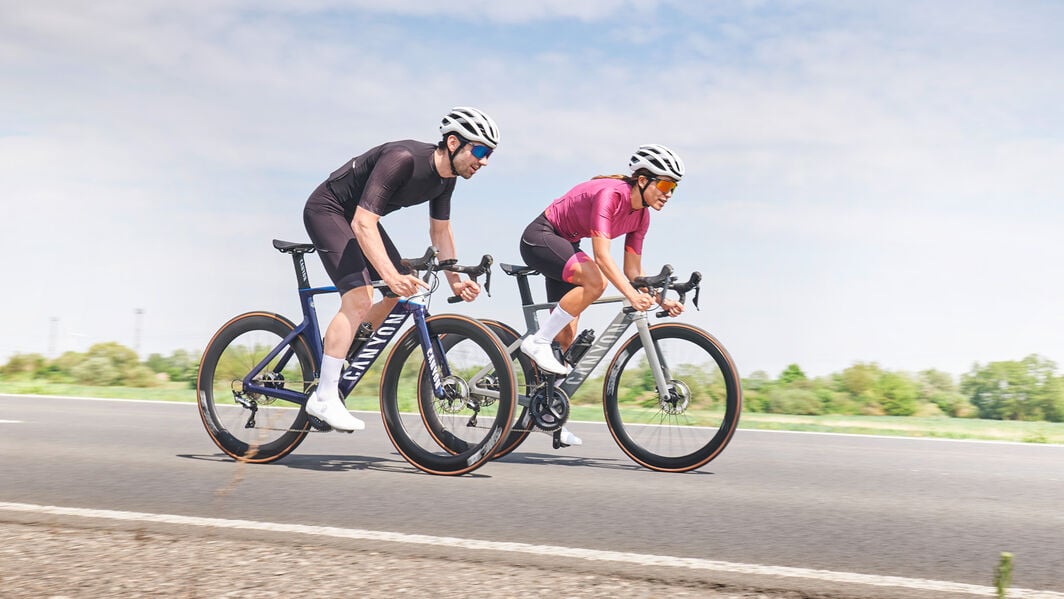
What role does the tire type play in determining the right pressure?
Different types of tires demand different air pressures. These are the three types:
Clincher
Clinchers are traditionally the most widely used tire type in road cycling. They are available in rigid or folding variants and are more susceptible to flats than tubeless and tubular designs. However, if you do get a puncture, clinchers are easier to fix. To continue riding, you just have to swap in a new inner tube.
Tubular tires
In tubular tires, the inner tube is sewn into the casing, creating a one-piece tube-shaped tire – hence the name. It is glued to the rim of the wheel. These tires are stronger and lighter, which is why they are popular in pro riding. In addition, they also provide more control in case of a sudden deflation, which is not always the case with clinchers and tubeless tires. However mounting the tires is more complicated because of the gluing.
Tubeless tires
Tubeless tires were initially mainly used in mountain biking. But for a number of years now, they have been gaining popularity in road cycling culture too. By using a combination of a special rim tape and a sealant made of latex, the tire itself holds the air with no inner tubes required. If the tire is punctured, the sealant also fills up any gaps in the rubber within fractions of a second. With tubeless tires, you can drop the pressure by 0.5 to 1 bar (10-15 psi) without an additional puncture risk. The lower air pressure creates noticeable improvements in comfort and grip – plus, rolling resistance is reduced. If you do get a flat tire against the odds, you can just fit a replacement tube like on a clincher.
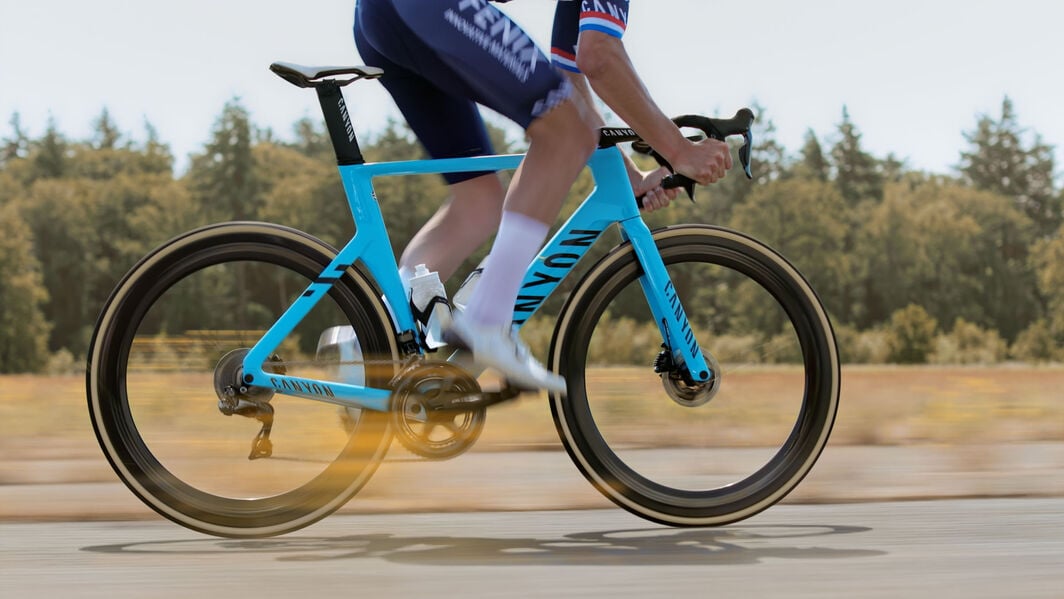
Tools and spare parts for keeping your tires pumped up
To maintain you bike's tire pressure, you need these tools and spare parts:
Which pump?
To set the air pressure on your road bike as precisely as possible, you should choose a floor pump. The pressure display lets you inflate your tires with absolute precision. Hand pumps are slower and take more physical effort to use – but they’re still an absolute essential when you’re out on the road.
Digital pressure gauge
If you want to determine the exact tire pressure on your road bike, you need a pump with a digital pressure gauge. Alternatively, you can use a digital air pressure gauge
Valves and valve adapters
When buying a pump, make sure it is compatible with your valves, or use a valve adapter if needed. Most road bike inner tubes have Presta valves (also known as French or Sclaverand valves). This type of valve can tolerate higher pressures than traditional Dunlop valves or Schrader valves. The narrow design is ideal for narrow road bike rims. Presta (Sclaverand/French) valves are more susceptible to bending than other types of valves due to their delicate construction, so when you’re pumping them up make sure you put the pump head on straight and remove it carefully.
Discover more about tire valves here!.
Patching a flat
To get back riding again fast when you get a flat, it’s a good idea to have patches, inner tubes and spare tires at hand. The older the tire, the more susceptible it is to punctures. You can use a puncture repair kit to patch small holes in the tube and reuse them.
Adjust your road bike’s tire pressure to your needs
Road surface, weather, tire type, body weight – a wide range of factors influence how much pressure you need in your road bike’s tires. By experimenting and trying out different pressures, you can quickly find out what works for you. To find a good baseline, you can use the manufacturer's specifications and the general rules of thumb described above. Plus with the right tools and spare parts, you can fix punctures and replace worn or broken parts.
Tires and tubes for road bikes and MTB
Discover our Road Bikes
Did this article help?
Thank you for your feedback
